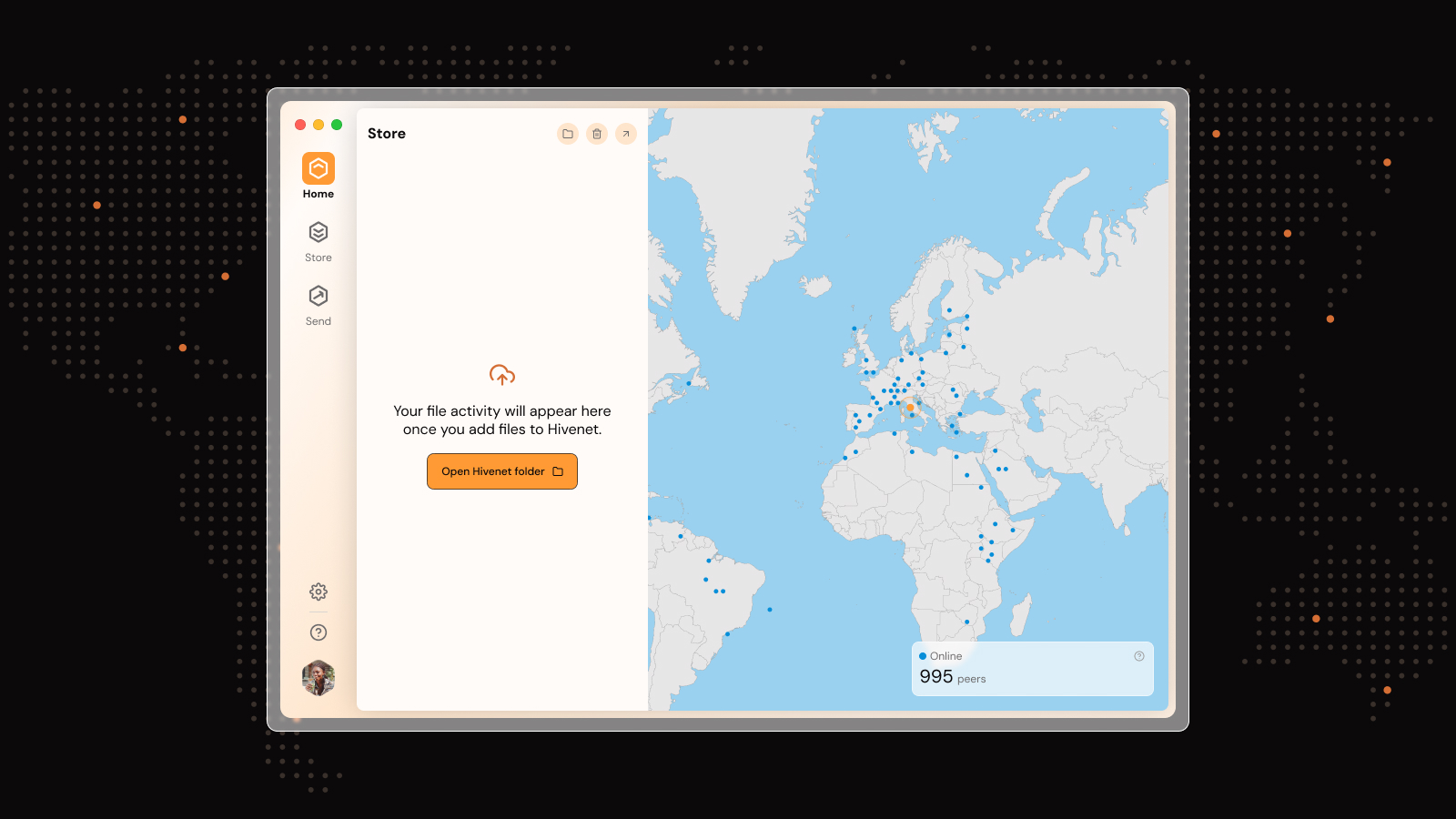
The sustainability issue: how Hivenet offers a more energy-efficient way forward
Your holiday videos. Your family photos. Your media, notes, and personal information.
Every time you upload the things that matter to you to the cloud, there’s a chance they end up being stored inside large warehouses thousands of kilometers away.
These vast warehouses are data centers. They’re most likely to be situated in a small town in the United States or on the outskirts of a European city. Inside the windowless structures lie stacks upon stacks of circuit boards and servers. This is where the world’s data, your data, gets transferred, exchanged, and stored. Built mostly by information traders (the Googles, the Microsofts, the Amazons), data centers are concentrated in northern Europe or on the east coast of the United States. They’re gigantic. Some of them are bigger than aircraft carriers. Their dimly lit halls are so long that staff have to ride through the corridors on scooters. While these hubs seem harmless and don’t exhale black smoke, they place a significant strain on our environment.
As more people use the Internet, more data centers will be created. But we don’t have to go down that road. There is another way. The Hivenet way.
So, let’s explore this more sustainable path. What are the drawbacks of data centers and what can Hivenet do that they can’t? How can you store your data, your way, while being more efficient and sustainable at the same time?
Let’s make a beeline from the problem to the Hivenet solution.
The energy explosion
As Internet and mobile phone traffic skyrockets, we’re hurtling towards an explosion in energy use. There are around 20 million servers housed in data centers across the world. They consume roughly 400TWh, representing 3% of overall electricity demand. 5G, the Internet of things, and the metaverse are only likely to increase demand for data centers. Current projections suggest that data centers could outgrow the energy consumption of the airline industry.
Here’s the thing: Studies suggest that most of the energy doesn’t directly contribute to useful computing and storage. 43% of the energy is consumed by other elements. Cooling systems to keep the servers from overheating. Power provisions like generators. 43% of the energy is used by the servers. And half of that energy is eaten up by idle servers. Finally, 14% of the energy is consumed by storage disks and networks.
This leaves us with warehouse-sized room for improvement.
Hivenet offers a different path
Using Hivenet can help us all save energy in many ways. Our secure distributed cloud works across our end users’ devices, reducing the need for expensive and energy-guzzling cooling equipment. Hivenet also helps to deal with the problem of idle servers gobbling up energy. You can expect significant power saving when users turn off or put their devices on sleep mode when they’re lying idle. And if that isn’t enough, Hivenet allows localization of your data: instead of traveling around the world from one far-flung data center to another, your files can be stored with peers located nearby.
At Hivenet, we don’t expect our users to keep their computers powered on. Our cloud is resilient to intermittent nodes arriving and disappearing. We want our users to use their computers as they normally do. Their power consumption will then be linked to real activity. Devices that are always on, like servers, will be classified as such and used as a priority to avoid useless data redundancy.
All of this means that Hivenet isn’t just a great alternative for data storage; it is also a more sustainable solution. So you can keep safe the things that matter to you while bee-ing more mindful about their impact on the planet.
Check out our blog articles for more. It’s an absolute beehive of knowledge.
How does Hivenet ensure the security and privacy of users' data stored across distributed devices compared to traditional centralized data centers?
Hivenet ensures security and privacy through a distributed cloud system, where data is stored across end users' devices. Unlike centralized data centers, which are vulnerable to single-point failures and targeted attacks, Hive's decentralized approach distributes data across multiple devices, making it more resilient to breaches. Additionally, encryption and authentication protocols are implemented to safeguard data integrity and prevent unauthorized access. No one ever has access to the data except for the end user.
Is the access to stored data also guaranteed when devices hosting the data are offline or unavailable?
We employ a resilient distributed network, which adapts to the dynamic nature of connected devices. This network ensures that even if certain nodes hosting data are offline or unavailable, redundant copies of the data stored on other active nodes can always be accessed.
Liked this article? You'll love Hivenet



You scrolled this far. Might as well join us.
Secure, affordable, and sustainable cloud services—powered by people, not data centers.
